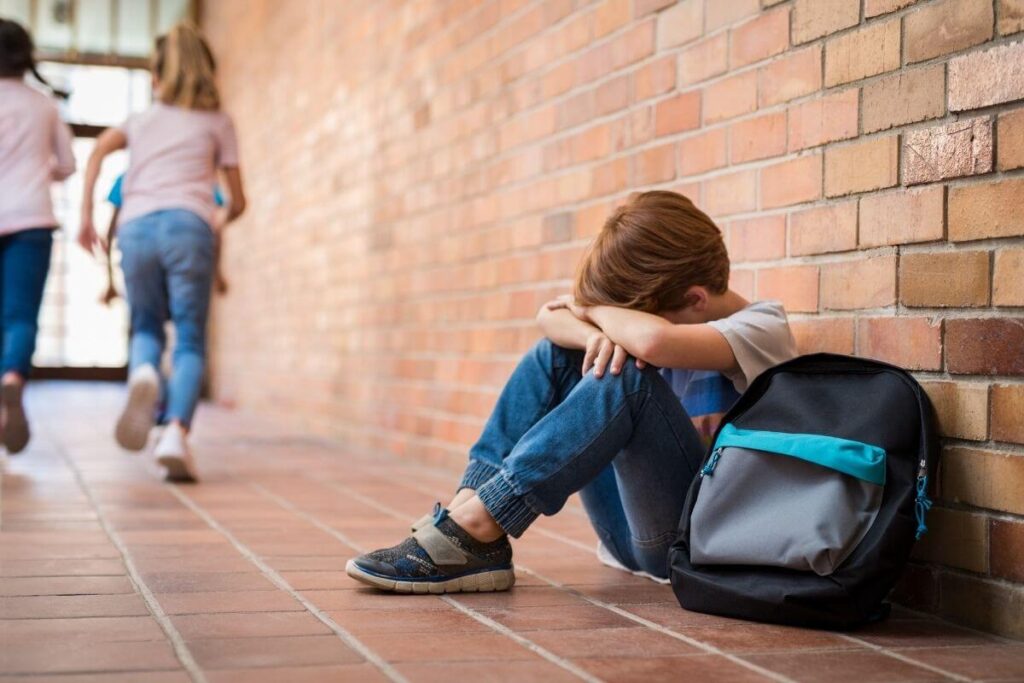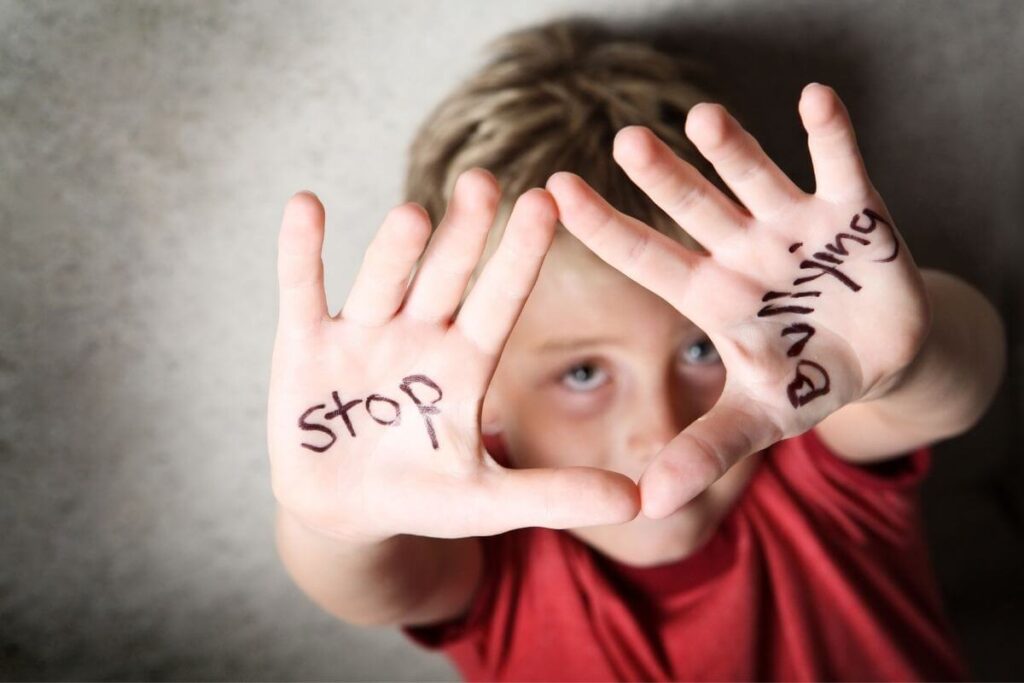Schools Are Not Doing Enough to Prevent Bullying
Schools are not doing enough to prevent bullying. Do you agree or disagree?
I was an educator for more than 30 years and genuinely believe we need more than the current anti-bullying policies in our schools today if we hope to end bullying. Also, I believe life skills are more important than academics in many cases — so read on!
We need compassion, patience, tolerance, grace, and most importantly role-models, along side any anti-bullying policies already in place. Our children are going through the worst pandemic our country has experienced in over 100 years — no one should be experiencing bullying in our schools (or outside of our schools) — by children or adults. But we still see our children being bullied on a regular basis.
I am concerned.
But I also see elements of compassion, patience, tolerance, grace, and role-model behaviors that give me HOPE.
Today I share my thoughts based on years of experience and expertise in the world of education because I see what’s happening in our schools and in our world today. Thank you for being here. I am passionate about the subject of bullying. I challenge you to be a difference maker and lead the way to put an end to bullying with me.

Schools Are Not Doing Enough to Prevent Bullying: History and Background
Unfortunately, bullying has been a problem as far back as I can remember. In elementary schools in the 1960’s, it was rampant, but most kids were tough and learned to deal with it. Plus, we didn’t have all the mental health knowledge that we have today to fully understand the impact bullying can have on human beings — both children and adults.
Somewhere along the way, by the time I was teaching in the 1990’s, anti-bullying policies and programs had become a trendy topic and mental health advocates pushed for softer, kinder schools. Proactive measures were put into place to prevent bullying in schools, and consequences were harsh.
Then we began to understand that bullies need help, also. So schools started taking a different approach. They had to have plans in place to counsel and support children who were being bullied as well as children who were the bullies. You know — everyone has a story.
So where did this leave staff? Who was going to be responsible for added work involved in dealing with bullying situations? When were these supports going to be implemented?
And how were schools going to deal with the parents? The bully was no longer being suspended from school, so the parents of the bullied child were not happy. The bully’s parents often did not want to deal with their child.
The next thing you know, parents started challenging school staff about WHO was really the bully? Maybe, just maybe, both children were bullying each other but staff didn’t see it? Right? These issues took more and more time away from the classroom. Teachers, administrators, and parents were often NOT on the same page and the situation could easily escalate to include adults.
Are you or someone you know dealing with an adult bully in your personal or professional life? If so, check out my extensive article about this topic in 25+ Powerful Tips for Dealing with an Adult Bully.
Do you see how complicated this anti-bullying issue is getting? And my brief description only touches upon the issues related to anti-bullying policies.
As an educator who had been bullied as a child, and was never taught how to deal with it properly, I was always proactive in my classrooms. Generally, I had very few problems with bullying, and if we had a problem, we discussed it and worked it out.
I was working in a low-income school with 94% of the students on free or reduced meals. These children had real problems in their lives and dealt with personal things that outright scared me when they shared their home experiences. I was always sensitive to what they were experiencing and the challenges they faced. I modeled how to care for one another, be patient with each other, and be kind to everyone — because that’s not always what these children saw away from school.
I cherish the 10 years I taught these students.

Then I became a Special Educator and National Board Certified Exceptional Needs Specialist. For the next 10 years, I was involved in anti-bullying policies at the school, district, state, and federal level simply by the nature of my leadership work with disabled children.
And then I became a school administrator, and saw a completely different side of the anti-bullying movement that often goes unmentioned. (More on that in another article.)
Federal Government Action
Meanwhile, over the course of all these years, the federal government began the StopBullying.gov movement under the U.S. Department of Health and Human Services.
STOMPOutBullying.org was founded and began a campaign to “End the Hate — Change the Culture.”
Additionally, the Office of Civil Rights became more active through the years in preventing discrimination and bullying in schools through the U.S. Department of Education.
With so much focus on anti-bullying policies, states were eventually forced to enact measures that addressed the bullying problem in schools — and now in the 21st century, we also have to address cyberbullying among our school children. To date, there has been no federal law specifically aimed at anti-bullying practices, but most states have implemented some kind of safe schools plan. Federal laws continue to be a priority for many lawmakers.
Without going into a lot of detail about safe schools legislation, I encourage you to read The Efficacy of Anti-Bullying Laws. Although the article is older, I can assure you that the problems remain the same. It discusses the proposed Anti-Bullying Act of 2013. As stated, “Many of these laws are steeped in controversy, due to the administrative and financial burdens programs put on schools.” Anti-bullying policies in schools vary widely because of the diverse educational and psychological perspectives about the problem.
Additionally, it reads, “Schools are also having trouble funding special bullying prevention programs, which forces school administrators to reallocate resources at the expense of other necessary school programs. Accountability is another problem — school districts are often unable to follow up with schools to ensure programs are properly implemented.” State laws are inconsistent, unreliable, and do not address the problem at the school level.
Pin to Pinterest for Later
Do you see how VERY complicated the issue of anti-bullying policies has become? And I have not even gotten into the political and statistical ramifications of trying to resolve the bullying problem among our school children. That’s for another article.
But schools are not doing enough to prevent bullying so we need difference makers to lead the way!
We need adults to treat each other with kindness and patience — on the phone, in person, in the car rider line, at sports events, at the dinner table, on the Internet — everywhere.
We need a kinder, gentler society that consists of adults who model appropriate life and coping skills for our children. As the motto for STOMP Out Bullying says, “End the Hate — Change the Culture.”

Anti-Bullying Policies Today and Where We Are
We have made tremendous progress with our anti-bullying policies and strategies over the years, but we continue to have children who are committing suicide and experiencing mental health problems because of bullying. I know it’s not all from school; but as a society we have to start somewhere and this is where we CAN make a difference.
With the growth of the Internet and social media, we have keyboard bullies who find it very easy to express themselves in a degrading and threatening manner. Today, children as young as 6-7 years old have mobile phones and are on the Internet during school hours. The opportunities for cyberbullying are immeasurable. But cyber security has not been able to keep up with the advancements, and schools have not been able to find a solution for students.
Related Article: The Pandemic and Social Media | Can We Be Kind?
While some lawmakers on Capital Hill are working on federal bullying laws, we are years away from authentic solutions. Consider that we have had anti-discrimination laws in effect for 50+ years but discrimination continues to occur.
And now with the pandemic, and no end in sight, our lives are turned upside down every day — so human beings are naturally on edge and frustrated — often demonstrating less tolerant behaviors and modeling aggression.
So what are schools doing today? The list is exhaustive but the programs I’m sharing below are just some of the efforts being put into anti-bullying policies. Some schools use intensive, formal programs that have been developed over time by mental health experts. Some schools use less formal strategies based on best practices for positive reinforcement. I’ve used all the strategies and efforts listed below with mixed results at both the elementary and middle school level. I believe in the concepts of many of them, but I feel others are too complicated and unrealistic for schools.
Still, I’m glad schools are trying SOMETHING and have put anti-bullying policies into practice to the best of their ability — in most cases. But it’s just not enough! We ALL need to do more.

Anti-Bullying Programs in Schools
These are some anti-bullying programs and strategies you may have heard mentioned around your child’s school:
Counseling Programs: School counselors generally have a district-wide curriculum they are required to use with students, as well as classroom lessons. These programs are usually developed by district leaders in the mental health field.
Character Education Programs: These programs may be developed at the district or school level, or purchased from a large company that specializes in character education. The content and presentation can vary greatly.
Positive Behavior Interventions and Supports (PBIS): “Positive Behavioral Interventions and Supports (PBIS) is an evidence-based three-tiered framework to improve and integrate all of the data, systems, and practices affecting student outcomes every day. PBIS creates schools where all students succeed.” This program used to be the standard for an effective anti-bullying schoolwide program. However, in recent years, there has been some controversy about the effectiveness of the strategies and practices within the program. Many have tried to replicate it because it’s very expensive to purchase.
Restorative Justice: According to Wikipedia, restorative justice is “an approach to justice in which one of the responses to a crime is to organize a meeting between the victim and the offender… The goal is for them to share their experience of what happened, to discuss who was harmed by the crime and how, and to create a consensus for what the offender can do to repair the harm from the offense.” As you might imagine, in the case of schools and anti-bullying policies, restorative justice is modified to address behaviors within the school other than crimes. I’ve seen this strategy used with very mixed results. Again, in schools, implementation is a problem because of staffing and time.
Social Skills Programs: Many schools today are using some kind of social skills curriculum, such as Second Step, to teach appropriate social skills and help students develop social-emotional learning. These programs are taught by teachers or counselors and often have designated times in the school day. They can be part of a Social Studies curriculum, or part of a Counseling curriculum. These programs tend to teach students how to respond to bullying by using effective strategies with the bully.
I used the Second Step curriculum as part of my National Board Certification portfolio and found it to be very common sense and easy for students to understand. In general, social skills programs can be very effective if teachers and counselors are committed to the importance of the learning.
These are some other strategies that I’ve seen implemented in schools to promote an anti-bullying culture:
- Lunch Bunches…
- Random Acts of Kindness…
- Buddy Clubs…
- Lunch Buddies…
- Playground Peacemakers…
- Anti-Bullying Pledge…
- Kindness Catcher…
- Kids Against Bullying…
- Anti-Bullying Clubs…
- Unity Dance…
- Project Connect…
- Kids Against Bullying Newsletter…
- Anti-Bullying Week…
- Mentoring…
And the list goes on…
The ideas are endless. But we have to buy into the concept of an anti-bullying culture if we are going to be difference makers in a world where challenges and frustrations are also endless. We need to support each other in our efforts to remain compassionate and kind amidst chaos.
And we, as adults, need to talk to one another with civility and patience if we want our children to do the same.

More About Cyberbullying
I want to include some information specifically about cyberbullying because this is an area that parents can help monitor and prevent. Some children are able to deal with cyberbullying better than others, but all parents should always monitor their children’s’ online activity to help them deal with any problems that come up.
What is cyberbullying? Cyberbullying is bullying in the digital space — it can happen on mobile phones, tablets, computers, etc. It is done via text messages, social media posts, forums, online gaming, apps, and more.
Cyberbullying is becoming more common and schools struggle to deal with it because it often isn’t done during school hours or on school property. Thus, they are reluctant to get involved.
This is why parents need to be so diligent in monitoring their children’s online presence. Cyberbullying can occur without you knowing and your child can often cover it up fairly well.
Unfortunately, some children cover it up too well but also let it cause great inner turmoil. These are the children you need to watch — if the cyberbullying gets too bad, it can negatively impact your child’s mental health.
If you would like to learn more about cyberbullying, I recommend that you read “All the Latest Cyberbullying Statistics 2022.” It’s a very comprehensive look at the current statistics and other details about this growing form of bullying. I encourage to read this resource.
Final Thoughts About Bullying Prevention
Before I close, please don’t forget that National Teacher Appreciation Week occurs every year during the first full of week of May! Remember to celebrate and honor your teachers for all they do for our future generations.
Now on to my final thoughts…
If you look around you, and consider what I’ve shared, I think you’ll understand why I say we need more than current antibullying policies in our schools because schools are not doing enough to prevent bullying. Campaigns, organizations, movements, policies… so far have not been enough!
We must look toward making cultural and societal changes if we truly want to implement effective anti-bullying policies that work in school, and outside of school, to keep our children safe in schools. We must be a catalyst for change in our schools.
Related Article: Education is Key to Success: But What Does That Mean?
We, as adults — whether as parents, teachers, or others — must model and teach compassion, patience, tolerance, and grace to our children.
We must remember that TEACHERS ARE DOING THEIR BEST under the difficult circumstances they are presented with by politicians and educational leaders.
We must also remember that PARENTS ARE DOING THEIR BEST under the difficult circumstances they are presented with in LIFE.
Our children are the future of our nation — regardless of whether we are in a pandemic or not. We need them to develop life-long skills that will take them into the future with strong coping skills, anger management, self-discipline and self-confidence, and tolerance for ALL.
We, as adults, cannot model for them our anger… our frustrations… our dissatisfactions… our lack of concern for humanity. Or our impatience with others. It would be a travesty for our world!
We need to model those character traits that will help them create a world of compassion, tolerance, and grace.
Only then will any anti-bullying policies work to create kinder, gentler schools.
IF YOU ARE READING THIS ARTICLE, THE CHANGE CAN START WITH YOU!
Love to All! ~ Susan
Schools Are Not Doing Enough to Prevent Bullying: Do You Agree or Disagree? How Can You Help?
Please share your thoughts in the comment section:)


Hey! thanks for this artical I needed it for school.
I’m so glad you found it helpful! Thanks for stopping by! xoxo:)
Glad it was useful! Thanks for stopping by!
Thank you so much for making this article I’m using it for school. Thank You. 😉
You’re very welcome… thank you for letting me know you found it helpful!
This was very helpful. Thank you for writing this.
You’re welcome… glad you found the information helpful!
Why is it so long but very well written?
I hope you found the information helpful even though you think it was too long:) I was trying to provide thorough information:)
Hi thnx for writing it was helpful 🙂
You’re very welcome… glad you found it helpful…xoxo:)